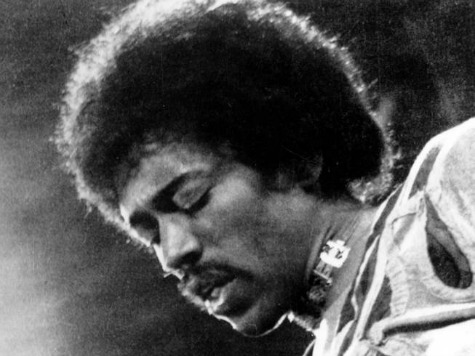By CHRIS TALBOTT
AP Music Writer
NASHVILLE, Tenn.
Jimi Hendrix recorded everything. More than 40 years after his death, though, the tape is finally running out.
The 12 tracks on “People, Hell & Angels” were recorded in 1968-69 after the Jimi Hendrix Experience disbanded. There’s a changeable roster of backing musicians, including Buddy Miles and Billy Cox, who would briefly become Hendrix’s Band of Gypsies. Stephen Stills, recently of Buffalo Springfield, even popped up on bass on one track.
It was a difficult period for Hendrix as his business and creative endeavors became entangled, and he retreated to the studio to seek inspiration.
Many of the songs have been heard in different versions or forms before, but the music here is funkier than his best known work _ at times sinuous, at times raucous. Horns pop up here and there. He’s a cosmic philosopher riding an earthbound backbeat on “Somewhere.” He’s a groovin’ bluesman enveloped in a bit of that purple haze on “Hear My Train a Comin’.” He challenges a saxophone to a fist fight on “Let Me Move You.” Then he channels James Brown on “Mojo Man” and ends the album as if shutting down an empty cinder-block club on a lonely stretch of dark highway with “Villanova Junction Blues.”
Hendrix died not long after making the last of these recordings. He’d already disbanded the players and was working with the Experience again in 1970 when he died of asphyxia in September 1970 at 27.
The last of the studio albums was timed for the year he would have turned 70. But in the 43 years that have passed since his death, he’s remained a fixture in American popular culture in much the same way Elvis Presley and Johnny Cash have endured. Still a radio staple, his image and music pops up often in commercials. There’s a biopic on the way with Andre Benjamin tackling the lead role. Even his out-there sense of fashion remains relevant.
Driving that image is the continued importance of his music, inspiring entranced young guitarists to attack his work in an endless loop of rediscovery over the decades. Tastes and sounds may change, but Hendrix always remains close at hand.
Maybe it’s because he was so far ahead of his time, we still haven’t caught up.
For Dickinson and his brother Cody, it was Hendrix’s post-apocalyptic psych-rock epic “1983 … (A Merman I Should Turn to Be)” that blew their minds. But he means different things to different musicians. He played the chitlin circuit in the South before being discovered as a rocker in Europe and his music was also steeped in the blues, R&B and jazz.
It’s that soulful side that first inspired Michael Kiwanuka, a young singer-songwriter who grew up in London thousands of miles away from Dickinson’s home in Hernando, Miss., yet was seized by Hendrix just as forcefully.
He first saw Hendrix in a documentary that was paired back to back with his performance at Woodstock. Kiwanuka was 12 and new to the guitar. He experienced a lot of sensations at once. First, there was the music. He wasn’t drawn to the rip-roaring psychedelia the Dickinsons favored, but the R&B-flavored classics like “Castles Made of Sand” and “The Wind Cries Mary.” The child of Ugandan immigrants also was amazed by Hendrix’s natural hairstyle, which closely resembled his own.
___
Online:
http://jimihendrix.com
___
Follow Music Writer Chirs Talbott: http://twitter.com/Chris_Talbott.

COMMENTS
Please let us know if you're having issues with commenting.